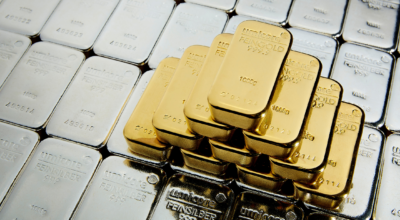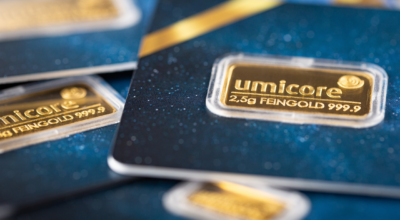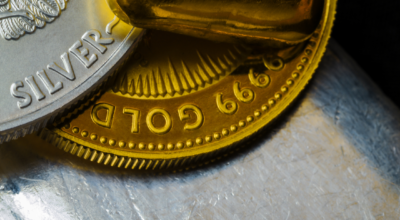We visited two websites specialised in investing in raw materials to understand the pros and cons of the different alternatives available, especially with investing in gold.
The source articles are from Rathbones (EN) and Ravaruforum.com (SV)
Image: Unplash
General About Investing in Commodities
Rathbones writes about porftolio diversification benefits that commodities may add to holdings of traditional stocks and bonds. On the cons side, commodities are speculative by nature.
Their price also tends to rise together with inflation, so Rathbones warns about investing in individual commodities with hopes for short-term benefits – it may turn out to be a volatile ride.
The typical start with investing in commodities is through buying shares of mining or energy companies. They can generate huge returns, but often lead to major losses due to the nature of the industry. Unforeseen problems and more general risks may quickly undermine the investment, says Rathbones.
Instead, they recommend a multi-asset approach to grown own wealth over the long term.
Investing in Gold – Three Alternatives
Ravaruforum lists the three main alternatives to investing in gold:
- physical gold
- ETFs (Exchange-traded Fund) and
- CFDs (Contract for Difference)
As an introduction, Ravaruforum.com explains the basic terms used in connection with investing in gold: spot price, karat and spread. Spot price is the price of an ounce of gold (31,1 gram) specified by the world market, karat is the measurement of purity of gold where 24 karat gold is pure gold (99,9%) and for example 17 karat gold is 17/24=75% purity of the total weight. Spread again is the difference between the bid and the ask price of an asset.
Physical gold – pros and cons
Ravaruforum.com lists the pros and cons of owning physical gold: the pros are that ownership over the gold is clear, especially if there is a purchase document available.
Availability can also be checked any time.
The challenges of owning physical gold are related to spread*, transport, storing, security and insurance and taxation topics. When purchasing physical gold one should be aware of and compare differences between the bid and ask prices, cost for transporting the purchased metal both at the purchase and when selling it further. Storage of precious metals, especially at home, should be considered carefully including personal safety aspects to limit any potential risks. Storing by a 3rd party is possible but is also a cost factor. Capital tax applies with capital gains at the point of selling, and the gains are reported as any other income in the personal tax return.
*Spread as defined by Investopedia
ETFs – pros and cons
This is one of the most typical ways of investing in gold and other precious metals, explains Ravaruforum. ETF is like a fund but can be traded like a share. Investopedia defines ETF here. The liquidity is normally guaranteed so one can buy and sell freely when the stock markets are open.
The ETFs reflect movements of the gold price, and it’s possible to choose whether you buy for “Bull” or “Bear”, depending on which way you expect the price to move. It’s good to pay attention to that all ETFs are not traded in the same currency so transactions may involve a currency risk, warns Ravaruforum.
The pros of investing via ETFs are that it’s simple and smooth, taxation is handled the same way as with regular stock, storing is not a problem and spreads are normally lower.
The cons of investing via ETFs are that the ownership of related gold is not as clear as with physical gold, in case of a bankruptcy of the fund, there may not be enough gold as a back-up of the sold ETFs. The cost of owning ETFs is not fully transparent so it makes sense to compare different funds. Many funds also have a closing date, so it’s good to be aware of that and ensure that own steps are clear in mind after the closing date. The same way as with CFDs, ETFs are tied to currencies requiring awareness of the currency risk.
CFDs – pros and cons
Investopedia specifies CFD as a contract for differences, i.e. it is a futures contract where differences are paid through cash payments and not by delivering physical goods and securities. Thus all losses and gains are paid in cash. A CFD investor gets all the benefits and risks of owning a security without owning the goods.
According to Ravaruforum, the pros of investing in gold via CFDs are the following:
It’s easy and smooth to set up an account and get going in five minutes. Storing is not a problem. One is not tied to the opening hours of the stock markets but can invest without time limits during the work days. Investing requires only a small % of the actual price of the asset. Spreads are lower compared with ETFs, currency risk is lower than with ETFs, and the contracts are open without a closing date.
The cons again are that even if you only invest a small sum of the actual value of the object, the rest of the value is an indirect loan with an interest rate applying on a yearly basis. Capital taxation is applied and gains and losses are automatically reported to the taxation office. It’s good to note that leverage works in both direction, whether it’s for gains or losses.
For precious metal buyers exploring investment options, Jalonom provides comprehensive insights into the advantages and disadvantages of investing in gold, assisting investors in making informed decisions tailored to their financial goals.






